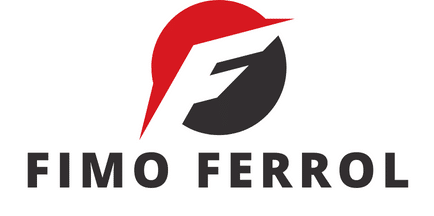What Are the Best Practices for Implementing Robotic Process Automation in UK Insurance Companies?

In an era where digital transformation is reshaping every industry, the UK insurance sector is also experiencing a significant shift. This transformation primarily revolves around Robotic Process Automation (RPA) and its potential to redefine business processes. The automation of repetitive, time-consuming tasks has proven to be a game-changer, enhancing the overall efficiency and productivity of insurance companies.
This article will explore how RPA is revolutionising the insurance industry. It will delve into the best practices for implementing automation in the insurance process, shedding light on how it can help streamline tasks like underwriting, claims processing, and policy management. So, whether you are an insurance company seeking to harness the power of RPA or someone interested in this breakthrough technology, continue reading.
A lire en complément : How to Design a Sustainable Workplace for UK Tech Startups Focused on Environmental Impact?
1. Understanding Robotic Process Automation (RPA)
Before we delve into the best practices, we need first to understand what RPA is. RPA is a software technology that automates repetitive, rules-based tasks that were formerly handled by humans. It mimics human interactions with digital systems and performs tasks faster and more accurately.
In the insurance sector, RPA can be used to automate a variety of processes, from underwriting and policy issuance to claim processing. The implementation of RPA not only saves time but also ensures accuracy and consistency in these processes.
Cela peut vous intéresser : How Can UK Bakers Use Instagram to Drive Sales of Artisanal Breads?
2. Identifying Processes Suitable for Automation
The first step in implementing RPA in your insurance business is identifying the processes that are ripe for automation. Not every task can be automated, nor should it be. The best candidates for automation are tasks that are repetitive, rules-based, and time-consuming. These might include data entry, policy issuance, and basic customer service responses.
When looking for processes to automate, consider the time and resources currently invested in those tasks. If a significant amount of time is spent on a process that could be performed by an RPA system, it would likely be a great candidate for automation.
3. Choosing the Right RPA Software
After identifying the processes you wish to automate, the next step is selecting the right RPA software. Various software solutions are available in the market, each with their unique features and capabilities. Factors to consider when choosing an RPA software include its ease of use, scalability, security features, and whether it can integrate with your existing systems.
Ensure that the RPA software you choose aligns with your business needs and objectives. It should be capable of automating the tasks you have identified and adapt to your company’s changes and growth.
4. Training and Support
Implementing RPA technology is not a plug-and-play affair. It requires careful planning, training, and ongoing support. Ensure that your staff are properly trained on how to use the RPA software. You should also establish a support system to handle any issues that may arise.
Proper training will help your employees understand the benefits of RPA and how it will change their work. It will also help dispel any fears that they may have about automation and job security. After all, RPA is not about replacing humans but enhancing their capabilities.
5. Continual Assessment and Improvement
Implementing RPA is not a one-time affair. It is a continuous process that requires regular assessment and improvement. After the initial implementation, evaluate the performance of your RPA system regularly. Identify any problems or inefficiencies and address them promptly.
Keep an eye on the latest developments in RPA technology. As the technology evolves, you may find new ways to use it to improve your business processes. Remember, the goal of implementing RPA is to enhance efficiency and productivity.
Although the journey towards RPA adoption in the insurance industry may seem daunting, the long-term benefits far outweigh the initial investment. With careful planning and execution, RPA can transform your insurance business, improving efficiency, accuracy, and productivity. As you navigate this journey, remember to keep your focus on the ultimate goal: providing excellent service to your customers.
Remember: automation is not about replacing humans—it’s about enabling them to do their jobs better. Keep your employees involved in the process, train them adequately, and support them as they adapt to the new technology. With the right approach, RPA can take your insurance company to new heights of success.
6. Integrating RPA with Machine Learning and AI for Fraud Detection
One of the best practices when implementing RPA in insurance companies is the integration of automation tools with Machine Learning (ML) and Artificial Intelligence (AI) for fraud detection. Fraud is a significant issue in the insurance sector, with companies losing millions of pounds annually. The integration of RPA, ML and AI can help insurance companies to better detect and prevent fraudulent claims, increasing efficiency and savings.
RPA bots can be programmed to flag suspicious claims, such as those with inconsistencies in the data or those that deviate from normal patterns. The flagged claims can then be reviewed by a human investigator, minimising time spent on false positives and focusing on potential fraudulent activity.
Machine learning and AI can help to improve the performance of RPA in fraud detection. These technologies can learn from previous fraudulent and non-fraudulent claims, enabling them to make more accurate predictions. Over time, this can lead to a reduction in fraudulent claims and better customer satisfaction.
However, it’s crucial to have a robust regulatory compliance framework in place. Insurance companies need to ensure that their use of AI and ML complies with data privacy laws and regulations. This is where the automation insurance comes into play, ensuring a balance between innovation and compliance.
7. Enhancing Customer Service with RPA
Customer service is a critical aspect of the insurance industry. Positive customer experience can lead to increased customer loyalty and satisfaction. RPA insurance has the potential to significantly enhance customer service, making it an essential tool for insurance companies.
RPA can automate various customer service tasks, such as responding to frequently asked questions, processing simple claims, and updating customer information. By automating these tasks, customer service representatives can focus on more complex issues, providing a more personalised service to customers.
Additionally, RPA can improve the speed and accuracy of customer service responses. For example, RPA bots can access and retrieve customer information quickly, reducing the time customers spend waiting for a response. They can also provide accurate information, reducing the risk of mistakes that can lead to customer dissatisfaction.
Furthermore, RPA tools can also be used to gain insights into customer behaviour and preferences. By analysing customer interactions, companies can identify patterns and trends, enabling them to offer more targeted and personalised services.
RPA, therefore, plays a crucial role in the digital transformation of the insurance sector. When implemented correctly, it can lead to significant improvements in efficiency and customer satisfaction.
Conclusion
The integration of Robotic Process Automation into the insurance industry is an integral part of the ongoing digital transformation. As we’ve explored, RPA can streamline various processes in insurance companies, from underwriting and claims processing to customer service and fraud detection.
However, the successful implementation of RPA requires careful planning, selection of the right RPA tools, proper training of staff, and continuous evaluation and improvement. It also requires a balanced approach to regulatory compliance, ensuring the privacy and security of customer data is maintained.
Moreover, the integration of RPA with other technologies such as machine learning and AI can further enhance its capabilities, providing additional benefits such as improved fraud detection.
The journey towards full process automation might be challenging, but the benefits it brings to the insurance sector are undeniable. Not only does it result in increased efficiency and accuracy, but it also enhances customer service and satisfaction.
As the digital workforce continues to evolve, insurance companies that leverage RPA will be better positioned to meet the demands of a rapidly changing industry. Ultimately, RPA is not about replacing humans but rather augmenting their capabilities, enabling them to deliver better service to their customers. That’s the real power of Robotic Process Automation in the insurance industry.
